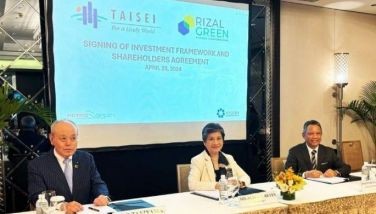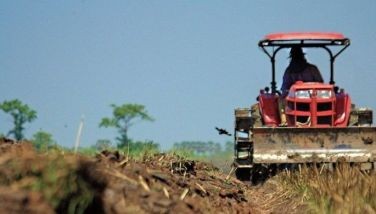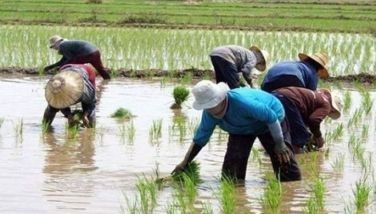Arakan Valley’s upland rice belt gets tested for genetic diversity
MANILA, Philippines - Rice is and will always remain as one of the most important staple foods among Filipinos.
For most Filipinos, it is the one thing that satisfies and completes every meal.
However, the agriculture sector is continually faced by challenges brought about by factors that hinder rice production. These include the inevitable occurrence and effects of climate change, as well as the widespread infestation of pests and diseases, among many other unfavorable conditions
The Food and Agriculture Organization (FAO) of the United Nations recognizes genetic diversity as the foundation of improving the genes of the crop and has become an integral part in the domestication and cultivation of crops.
Genetic diversity is essential in maintaining the richness of biodiversity as the two are regarded as dependent on each other, such as changes that occur in genetic diversity will also affect biological diversity, and vice versa.
In Cotabato lies what is considered as the upland “rice belt†called Arakan Valley where a number of indigenous upland rice are thriving.
With support from the Bureau of Agricultural Research (BAR), a study was initiated by Dr. Juliet Bangi of the University of the Philippines-Natural Sciences Research Institute (UP-NSRI) in cooperation with the local government unit of Arakan through the Municipal Agriculture Office, Manobo Lumadnong Panaghiusa (MALUPA) of Arakan, Cotabato, and SEARICE, an NGO helping the Manobo tribal community in Arakan Valley Complex.
The study seeks to determine the desirable rice gene characteristics through morphogenetic characterization and analysis of the genetic diversity of the indigenous upland rice in the valley.
Understanding the structure and diversity of indigenous rice is needed by scientists and researchers in the conservation and preservation of genetic resources that have potential uses for future breeding purposes.
In the study, 14 indigenous upland rice were collected from local farmers. These include Azucena, Dinorado, Mal-os, Magalitok, Kapalawan, Mubpon, Manisi, Bungulan, Kawilan, Malundiang, Sinulid, Ulipapa, Dabao, and Hinumay.
The rice varieties were studied under laboratory and greenhouse experiments to characterize their seeds and plant structure. These include plant height, number of tillers per plant, number of days to flowering, number of panicles per plant, panicle length, and 1,000-grain weight.
Results showed that the indigenous upland rice is highly diverse with desirable characteristics. Among those studied, the tallest plants are the Azucena and Hinumay.
Meanwhile, Kawilan had the highest number of tillers per plant as well as the panicles produced, and the Malundiang had the earliest flowering period. The longest panicle was produced by Magalitok, and Ulipapa and Bungulan had the heaviest 1,000-grain weight.
Meanwhile, in analyzing the genetic diversity of the rice, one of the most powerful tools used by scientists is through DNA markers. The study particularly used the simple sequence repeats (SSR) which are also called microsatellites.
Among the DNA markers, SSRs are found to be the most efficient and cost-effective tool that can detect higher degree of polymorphisms in rice.
The study revealed that Malundiang and Ulipapa have 30-50 percent associated genes that possess the desirable qualities of being early-maturing and having high yield potential. Bungulan, Mubpon, Sinulid, and Mal-os have diverse genes, and are found to have desirable genetic makeup based from their morphogenetic characteristics.
Bungulan, Manisi, Kapalawan, Magalitok, Sinulid, Mal-os, and Dinorado have varied and narrow genetic distance indicative of having distinct genes. With a dissimilarity index of 3.32, Kawilan and Kapalawan are upland rice with different genes.
These reflect the diversity of the indigenous upland rice in the Arakan Valley Complex based on their genetic makeup, and those that were studied are part of the genetic pool of resources in the locality.
High-yielding varieties with promising potentials may emerge in the future as breeding efforts using our indigenous upland rice result in the successful improvement of grain quality, resistance to pests and diseases, and reduction in the maturity period, among many others.
If effectively managed and used, they would be substantial in meeting the ever-increasing demand for food as the future unfolds.
- Latest





























